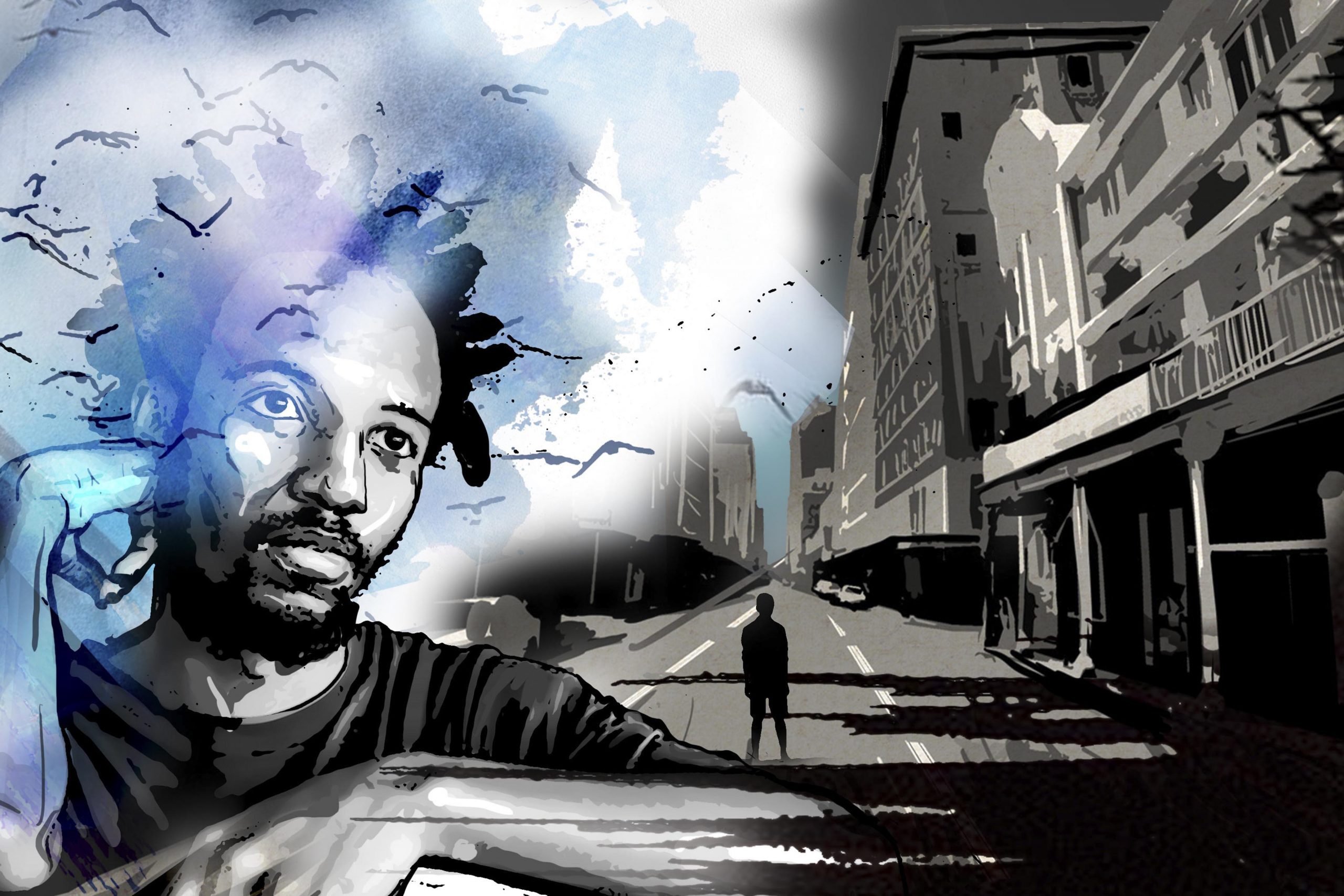Undone by ‘unseen’ Cape Town
K Sello Duiker started a trend when he made Cape Town the setting for his award-winning book about falling apart. Rofhiwa Maneta looks at two other novels on the same theme.
Author:
5 March 2019

Like all myths worth revisiting, K Sello Duiker’s begins with an ending.
Before his death in 2005, the award-winning writer published two books – Thirteen Cents and The Quiet Violence of Dreams – that spoke candidly of race, sexuality and Cape Town’s class divide. The Quiet Violence, his magnum opus, is a discomforting story about Tshepo, a journalism student who finds himself at odds with his sanity after being admitted to a psychiatric hospital for cannabis-induced psychosis. Rendered in a rich, lyrical prose style, the book is often regarded as a semi-autobiographical account of Duiker’s time in the mother city.
Duiker’s Cape Town is unlike what many outsiders would have imagined it to be at the time. The city is a purgatory where the supernatural and mythical exist side by side with reality. Drugs, sexual assault and the threat of violence always loom large and in both Thirteen Cents and The Quiet Violence, the city seems intent on breaking the protagonists into pieces.
Related article:
“Sometimes I just pray for the light of day when I will be able to breathe again instead of holding my breath with fear … Every day is hard. And every day is different because moods change. Faces become masks and silence becomes the cross you bear,” says Tshepo, when he is first committed to Valkenberg psychiatric institution. Later in the novel, he escapes, is recommitted, released and then raped by his flatmate before giving himself to the streets as a sex worker.
Indeed, Duiker was instrumental in starting something of a literary subgenre in South African writing about young black males coming undone in Cape Town.
Songeziwe Mahlangu’s award-winning, semi-autobiographical novel, Penumbra, deals with similar themes. Mangaliso, the novel’s main character, is a recent graduate battling to keep afloat in a job he hates and in a city on the verge of swallowing him whole. He is already having difficulty keeping sane when we’re introduced to him.
“This is not how things are meant to be,” the book opens, as Mangaliso walks around the city in the middle of a full-on mental collapse. “I walk past sickly people in the street. One man’s face is charred, with pink lips that have been licked by spirits. He moves like he is dying.” The book also deals with Cape Town’s racist rental practices – Mangaliso views a flat and upon seeing the landlord is white, knows he won’t get it – and Cape Town’s spatial apartheid is discussed at length.
Related article:
Mahlangu wrote the book after experiencing a similar breakdown to the protagonist’s. He was working at a health insurance company and his life was going into freefall – he hated his job, felt he had no sense of purpose and was also drinking and taking drugs. Like Duiker, his mental collapse seems to have happened because of his time in Cape Town.
In an interview with The Johannesburg Review of Books, Mahlangu admitted to being aware of the similarities his novel shared with Duiker’s book. “I was conscious of the fact that the book had certain undertones of The Quiet Violence of Dreams. Even during my breakdown, I was thinking of Tshepo.” Penumbra was prompted by a different outlook on race after living in Cape Town.
“I’d say Cape Town makes one aware of being black. There’s the racial aspect of space. We’ve all shared stories of how difficult it was to find accommodation as a black person and how you felt that in some places you were overlooked because you were black.”
A close friend of Mahlangu’s, the award-winning writer Masande Ntshanga, published The Reactive in 2014. Set in Cape Town in the early 2000s, the novel follows the main character, Lindanathi, who’s infected himself with HIV, as he wrestles with the death of his brother and tries to keep the tedium of his life at a remove by smoking industrial glue, doing khat, selling his antiretroviral drugs and traversing suburban Cape Town with his friends. Death is never far away from him or his friends.
“I’m Nathi and of the three of us, I’m the one that’s meant to be dying,” says the main character at the beginning of the book. “In order to do as much standing around as I do, you need to be one of the 40 million human beings currently infected with the immunodeficiency virus …What helps, of course, is to try to forget about it as much as possible. Which is what I do.”
Related article:
But unlike in Penumbra and The Quiet Violence, race and mental illness aren’t the novel’s animating themes. Lindanathi leaves his life in the Eastern Cape and settles in Cape Town as a means of escaping the trauma of his brother’s death 10 years earlier. Ntshanga’s prose gives a surrealist flourish to the purgatory that is Cape Town. “A large crane ship slowly drifts past the vista of Table Mountain, while above us, the sky clears up in a rounded blue column.” Later on, he writes: “I can feel the cogs of the city’s industries churning down to stillness, and smell the exhaust fumes from the taxis, as if each plume was mixing in with our exhaustion.”
Lindanathi – whose name means “wait with us” – is waiting for a myriad of things: to heal, to self-destruct, to live, to die. All of this happens against the backdrop of a city waking up from apartheid’s hangover.
All three novels have struck a particular resonance, both locally and internationally. While all of them are well written, their real beauty comes down to the fact that they reveal a side of Cape Town not often explored in mainstream literature. Johannesburg has been immortalised by authors including Phaswane Mpe, Niq Mhlongo and Kgebetli Moele. But it is Cape Town, if the works of Duiker and the like are to believed, that is a place where black men go to lose their minds.



